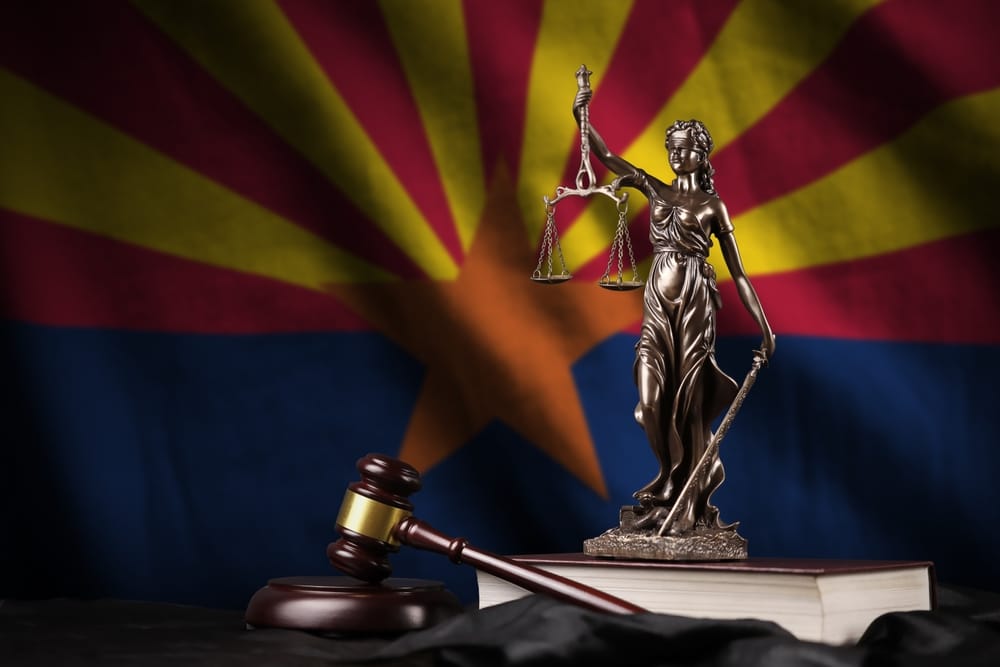Arizona Bankruptcy Guide

Introduction
Arizona’s bankruptcy system provides a structured path to financial recovery while offering unique protections and considerations specific to the state’s residents. Understanding these state-specific elements is crucial for anyone considering bankruptcy in Arizona, as they can significantly impact the outcome of your case.
The desert state’s unique characteristics, from its large retirement population to significant Native American lands, have shaped special provisions in how bankruptcy cases are handled. These considerations affect everything from property exemptions to residency requirements and even how basic necessities like air conditioning are treated in bankruptcy proceedings.
This guide provides a comprehensive overview of Arizona-specific bankruptcy rules, requirements, and resources. While federal bankruptcy law provides the framework for all bankruptcies, Arizona’s specific rules and exemptions often determine what property you can keep and how your case will proceed.
Whether you’re a long-time resident or recently moved to Arizona, understanding these state-specific aspects of bankruptcy can help you make informed decisions about your financial future. This guide will help you navigate the complexities of filing bankruptcy in Arizona while maximizing the protections available under state law.
Remember that while this guide provides detailed information about Arizona bankruptcy law, it should not be considered legal advice. Always consult with a qualified bankruptcy attorney licensed in Arizona to discuss your specific situation.

State Bankruptcy Courts
Arizona’s bankruptcy system operates through the United States Bankruptcy Court for the District of Arizona, with locations strategically placed throughout the state to serve its diverse population. The court’s headquarters in Phoenix handles the majority of cases, while additional locations in Tucson, Yuma, and Flagstaff ensure accessibility for residents across the state.
Each courthouse location maintains its own specific procedures and local rules, though all operate under the unified District of Arizona system. The court’s website (www.azb.uscourts.gov) serves as a central resource for forms, procedures, and updates about local bankruptcy practices.
The District of Arizona’s bankruptcy courts are known for their efficiency and use of electronic filing systems, making it easier for attorneys to file and manage cases. However, they also maintain procedures for pro se filers (those without attorneys) to ensure access to the bankruptcy system for all residents.
Arizona Property Exemptions
Homestead Exemption
Arizona offers one of the more generous homestead exemptions in the country, protecting up to $250,000 in equity in a person’s primary residence. This protection applies equally to single individuals and married couples, making it particularly valuable for Arizona homeowners facing financial difficulties.
The homestead exemption covers traditional single-family homes, condominiums, and mobile homes, providing broad protection for various types of residential property. However, to claim this exemption, homeowners must record a homestead declaration and actually occupy the property as their primary residence.
A unique aspect of Arizona’s homestead protection is the 150-day reinvestment requirement. If you sell your protected homestead, you must reinvest the protected amount in a new Arizona homestead within 150 days, or the protection is lost. This requirement makes timing crucial for anyone considering selling their home during or after bankruptcy.
Personal Property Exemptions
Arizona provides specific exemptions for various categories of personal property, balancing the need to protect basic necessities with preventing abuse of the bankruptcy system. The state allows up to $6,000 in vehicle equity ($12,000 for disabled individuals), recognizing the essential nature of transportation in Arizona’s spread-out communities.
Personal items receive varying levels of protection, with clothing receiving unlimited protection while other categories have specific limits. Household goods are protected up to $6,000, jewelry up to $2,000, and family photos and books up to $500, reflecting the state’s assessment of what constitutes reasonable personal property protection.
The state also recognizes the importance of pets and musical instruments in people’s lives, providing protection of up to $800 for domestic animals and $400 for musical instruments. These exemptions, while modest, help ensure that individuals can maintain basic quality of life through the bankruptcy process.
Wage Exemptions
Arizona protects a significant portion of workers’ earnings from creditors, ensuring individuals can maintain basic living standards while addressing their debts. The state allows residents to keep either 75% of their disposable weekly earnings or 30 times the federal minimum hourly wage, whichever is greater.
This protection applies to both bankruptcy proceedings and regular wage garnishments, providing consistent protection for workers facing financial difficulties. The calculation of protected wages includes regular salary, hourly wages, and most other forms of employment compensation.
The wage exemption works in conjunction with other protections to ensure individuals can maintain basic necessities while working through their bankruptcy case. It’s particularly important for Chapter 13 filers, who need to maintain regular income to fund their repayment plans.
Special Arizona Considerations
State-Specific Requirements
Arizona imposes several unique requirements on bankruptcy filers, reflecting both the state’s particular concerns and its experience with various bankruptcy scenarios. All filers must complete approved credit counseling from providers authorized to operate in Arizona, ensuring they receive guidance relevant to the state’s financial environment.
Residency requirements are particularly important in Arizona due to its large seasonal population. The state requires specific periods of residency before individuals can use Arizona exemptions or file in Arizona courts, with special considerations for part-time residents and “snowbirds” who split their time between Arizona and other states.
Arizona’s community property laws add another layer of complexity to bankruptcy filings, affecting how marital assets and debts are treated in bankruptcy. These laws can impact everything from property exemptions to debt discharge, making it crucial to understand their implications when filing bankruptcy in Arizona.
Median Income Thresholds
Arizona’s median income thresholds, which determine eligibility for Chapter 7 bankruptcy and influence Chapter 13 plan requirements, reflect the state’s cost of living and demographic patterns. As of 2024, these thresholds range from $61,962 for a single person to $97,524 for a family of four, with adjustments for larger households.
These thresholds are regularly updated to reflect changes in the state’s economic conditions and serve as crucial benchmarks in bankruptcy planning. They help determine whether individuals qualify for Chapter 7 bankruptcy or must consider Chapter 13 reorganization instead.
Understanding how your income compares to these thresholds is essential for bankruptcy planning, as it can significantly impact your options and the course of your bankruptcy case. These figures are particularly important for households near the threshold limits, who may need to carefully time their filing or consider alternative debt relief options.
Arizona-Specific Timeline
The bankruptcy timeline in Arizona follows federal guidelines but includes state-specific elements that can affect case progression. Credit counseling must be completed within 180 days before filing, with approved providers familiar with Arizona’s particular financial environment.
Most Chapter 7 cases in Arizona progress from filing to discharge in about four months, assuming no complications arise. The meeting of creditors typically occurs 21-40 days after filing, with discharge following 60-90 days later, though local court schedules can affect these timeframes.
Chapter 13 cases follow a longer timeline, typically lasting three to five years depending on the filer’s income and circumstances. Throughout this period, Arizona’s local rules and requirements continue to affect various aspects of case administration.
Local Resources
Legal Aid Organizations
Arizona maintains a robust network of legal aid organizations providing assistance to individuals considering or going through bankruptcy. Community Legal Services, with its statewide reach and toll-free number (800-852-9075), offers valuable resources and guidance for low-income residents.
Southern Arizona Legal Aid focuses on serving residents in the state’s southern regions, while DNA People’s Legal Services specializes in assisting Native American communities. These organizations often provide both direct legal assistance and referrals to other helpful resources.
Each organization maintains specific eligibility requirements and service areas, but collectively they form a comprehensive support network for Arizona residents facing financial difficulties. Many offer services in both English and Spanish, reflecting the state’s diverse population.
Post-Bankruptcy Considerations
After bankruptcy, Arizona residents must navigate several property tax considerations to maintain their homestead protection and property ownership. While the homestead exemption continues to protect qualifying property, owners must stay current on property tax payments to avoid potential issues.
Arizona offers special property tax protections for senior citizens, which can continue through and after bankruptcy. Understanding how these protections interact with bankruptcy discharge and ongoing obligations is crucial for long-term financial planning.
The state’s property tax system includes various deadlines and requirements that must be met to maintain property rights and protections, making it important to understand these obligations as part of post-bankruptcy planning.

Conclusion
Successfully navigating bankruptcy in Arizona requires understanding both federal bankruptcy law and state-specific requirements and protections. The state’s unique characteristics, from its climate considerations to its large retirement population, have shaped special provisions that can significantly impact bankruptcy cases.
Working with qualified professionals who understand Arizona’s particular bankruptcy landscape can help ensure you maximize available protections while meeting all state-specific requirements. This might include attorneys familiar with local court procedures, approved credit counseling agencies, and financial advisors experienced with Arizona’s particular challenges.
Remember that bankruptcy laws and requirements can change, and local rules may vary between court divisions. Stay informed about current requirements and consider consulting with legal professionals about any significant changes that might affect your case.
The path through bankruptcy in Arizona, while complex, provides an opportunity for a fresh financial start while protecting important assets through state-specific exemptions. Understanding these protections and requirements helps ensure the best possible outcome for your bankruptcy case.
For many Arizona residents, bankruptcy represents an important tool for addressing financial difficulties while maintaining essential property and dignity through the process. With proper planning and guidance, you can navigate the bankruptcy process successfully and begin rebuilding your financial future.
Long-term success after bankruptcy often depends on understanding and planning for post-bankruptcy obligations and opportunities. Whether dealing with property taxes, vehicle registration, or HOA issues, having a clear plan for addressing these continuing responsibilities helps ensure a successful fresh start.
